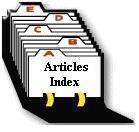American Pigeon Journal
January 1988, page 61.
"Wobbly" ... is it New In Pigeons?!
by Robert J. Mangile
When a pigeon fancier discovers a strange behaving or abnormal looking squab in the nest, he declares: ".. something is wrong with it...". and the matter is forgotten with its elimination. Many such birds are the results of genetic inheritance and not infection, medication, etc. The "neck tremor" of the Zitterhal is a classic example; which, instead of being an asset is technically a "genetic disease".
Researchers have discovered similar mutant types in domestic pigeons which display a variety of abnormal characteristics; most of which are objectionable to pigeon fanciers. Why the "neck tremor" of the Zitterhals, or the "tumbling" ability of Rollers and other Tumblers became acceptable is not easily understood? The "clumsy" trait is equally unique; yet, it fails to strike the fancy of pigeon keepers.
Figure 1.
Photographed from above while nearly standing on its head, this juvenile cock displays one of many awkward positions so typical in extreme examples of "wobbly" pigeons. Notice wide spread feet and tail held up and forward above head.
Photo by: Kerry Hendricks
Figure 2.
Photographed from above the same "wobbly" Blue Bar Chinese Owl backcross, in a similar position. Such positions are achieved during excited or hurried attempts to move forward. Note the healthy physical condition of the bird.
Photo by: Kerry Hendricks
In May of 1984, Eugene Hochlan sent me a Chinese Owl hen with an abnormality he accurately described as "wobbly" and assumed it was a genetic recessive trait. Since then, a few fanciers have accumulated scanty breeding data which strongly suggest that "wobbly" is a simply recessive trait (gene) and currently I use the tentative gene symbol "wo" for "wobbly".
Wobbly squabs appear normal; but, record notes suggest that newly hatched squabs sometimes display unsteady heads. At about two weeks of age a slight but extremely rapid head tremor may be noticed. The tremor is unique, in that it appears to rotate vertically and with such speed that in a few individuals the eyeball appears enlarged from the "after image" produced. At this stage the squab may or may not appear to walk and move normally. With advancing age (3-4 weeks) it becomes noticeably unsteady and "wobbles" when walking, sporadically jabbing its head forward and downward. The bird's condition appears to worsen until about two months of age, often falling over forward or backward when attempting to walk. Later, it stands with legs spread and its abdomen may touch the floor; sometimes bracing itself on its tail.
Judging from the degree of infertility it appears that cocks have difficulty copulating; and birds displaying an extreme expression of the "wobbly" trait may have difficulty eating and drinking, or maintaining an upright position. The ability to fly with control, ...surprisingly, appears mostly normal over short distances within the confines of a loft; but landing under control is difficult. Most soon learn to select a nestbox or a favorite place where left unmolested. Birds displaying milder expressions of the trait function reasonably well; i.e., they fly to upper levels, eat and drink well, and in spite of their wobbly gait, mingle with loftmates. Vision seems to be unimpaired.
The reproductive potential of wobbly pigeons is difficult to assess from limited experience. The original hen laid and hatched eggs; but memory recalls that some were rough-shelled. She died from oviduct complications, under three years of age. Another hen died trying to lay her first egg; and, yet another hen reportedly died young after given to another fancier. Such cases might suggest that wobbly hens have trouble laying, and/or live short lives. The original hen did not generously feed squabs.
# # #
